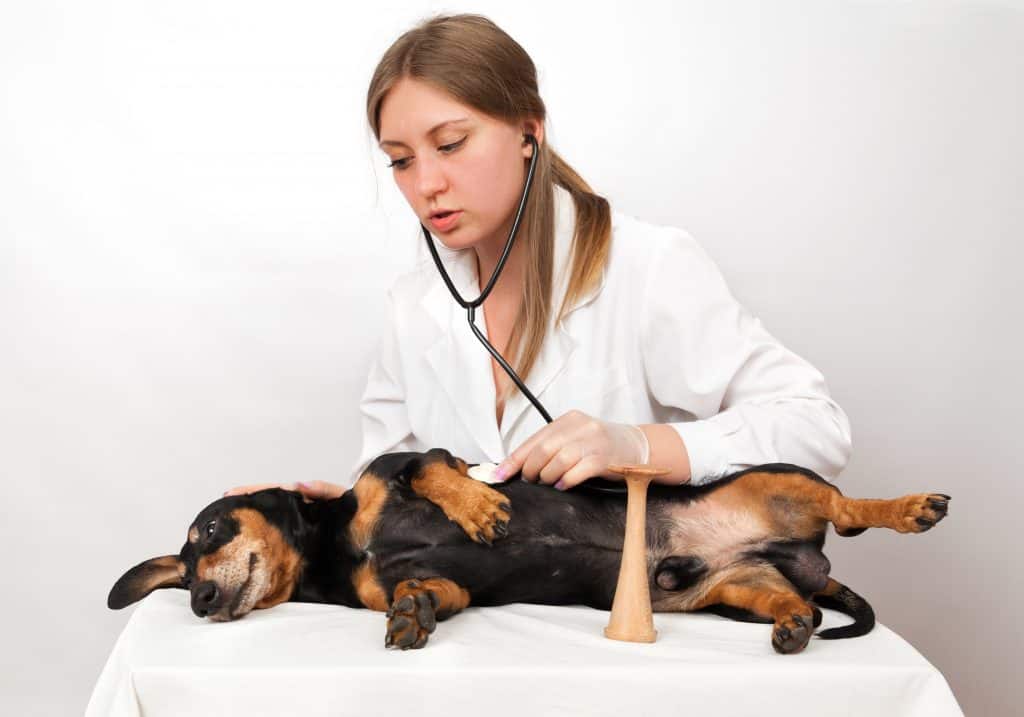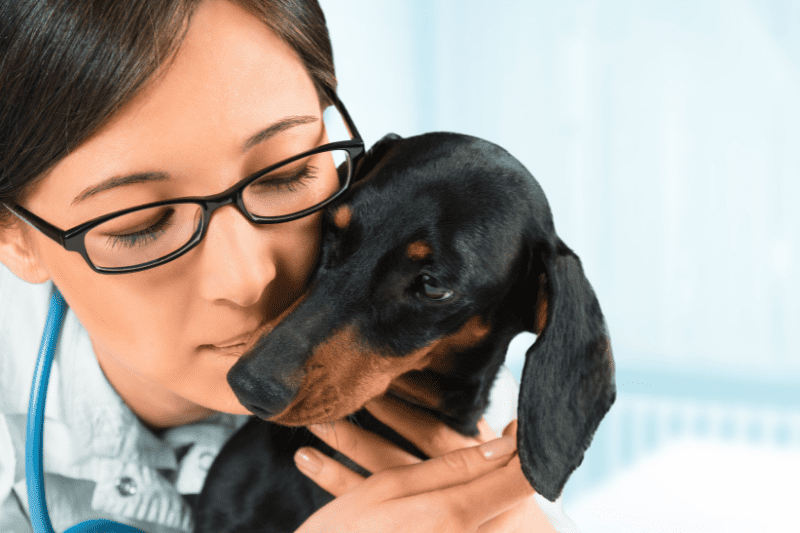
Dachshunds are one of the most popular dog breeds in the United States. They are known for their long bodies and short legs. But what many people don’t know is that dachshunds are prone to back problems.
Dachshunds are susceptible to back problems because of their long bodies and short legs. This combination puts a lot of strain on their spines, which can lead to slipped discs and other issues.
The good news is that there are some things you can do to help prevent back problems in your dachshund.
The Most Common Back Problem in Dachshunds
The Most Common Back Problem in Dachshunds is Intervertebral Disk Disease (IVDD). This condition affects the disks that cushion the vertebrae in the spine.
The disks serve as shock absorbers for the spine, and over time, they can degenerate and become less effective.
This can cause the disks to rupture or herniate, leading to pain and paralysis. IVDD is most common in older dachshunds, but it can occur in dogs of any age.
What Causes Intervertebral Disc Disease?
Intervertebral disc disease is caused by the deterioration of the discs that sit between the vertebrae in the spine.
These discs are made of a tough, outer layer enclosing a softer, jelly-like center. They act as cushions between the vertebrae, absorbing shock and protecting the spinal cord.
When the discs break down, they can rupture or herniate. This means the inner jelly-like material leaks out and puts pressure on the spinal cord. This can be very painful for your dog and can even lead to paralysis.
Dachshunds are particularly susceptible to this condition because of their long backs and short legs. This unusual body type puts a lot of stress on the spine, and over time, the discs can start to break down. Genetics also plays a role; some dachshunds are simply born with weaker discs than others.
There are a few other factors that can contribute to the development of IVDD, including obesity, injury, and lack of exercise.

Signs and Symptoms of Intervertebral Disc Disease
The most common symptom of intervertebral disc disease is a sudden onset of pain in the back or neck.
Your dog may cry out when you try to pick him up or when he moves in certain ways. He may also be reluctant to walk or jump, and he may seem twitchy or uncomfortable.
If you notice any of these symptoms, it’s important to take your dog to the vet right away.
Related post: A Guide to Understanding IVDD Disease in Dachshunds
How Is Intervertebral Disc Disease Diagnosed?
Intervertebral disc disease is diagnosed through a combination of physical examination, X-rays, and MRI.
Your vet will start by taking a physical exam. The vet might then order X-rays of your doxie’s spine to look for signs of disc disease, such as disk degeneration or herniation. If the X-rays are inconclusive, the vet may also recommend an MRI.
This test is more expensive, but it can give a more detailed view of the discs and the surrounding structures.
Related post: How to Care for a Dachshund with a Back Injury
How Is Intervertebral Disc Disease Treated?
There are a variety of treatment options for intervertebral disc disease. The course of treatment will depend on the severity of the condition and how your dog is responding.
In mild cases, your vet may recommend a course of conservative treatment. This can include pain medication, rest, and physical therapy. You may also need to make some changes to your dog’s diet and exercise routine.
If conservative treatment doesn’t work or your dog is in severe pain, your vet may recommend surgery. Surgery can be used to remove the damaged disc and relieve the pressure on the spinal cord. In some cases, an artificial disc may be inserted.
After surgery, your dog will need to rest and recover. He will likely need to stay in the hospital for a few days. He will then need to take it easy at home for several weeks. Physical therapy may also be recommended to help your dog regain his strength and mobility.
This surgery is usually only done if your dog is in severe pain or if he is at risk for paralysis.
Related post: How do you prevent back problems in dachshunds?

Preventing Intervertebral Disc Disease
One of the best things you can do is to make sure your dachshund gets plenty of exercise. This will help keep their muscles strong and their spine healthy.
You should also avoid letting your dachshund jump down from high places, as this can strain their back unnecessarily.
If you have to pick them up, be sure to lift them from under their belly, not by their front legs. Finally, make sure they have a comfortable place to sleep that doesn’t put any strain on their back.
By following these simple tips, you can help keep your dachshund healthy and avoid back problems. If you think your dachshund may be having back problems, be sure to take them to the veterinarian so they can get the help they need
Finally, keep your dachshund at a healthy weight. Obesity puts extra strain on the spine, which can speed up the breakdown of discs. Make sure you’re feeding your dachshund high-quality dog food.
Related post: A Guide To Dachshund Diet and Exercise
Consider Getting a Ramp for your Dachshund
To ensure the well-being of Dachshunds, it is recommended that owners take precautions to prevent their long-bodied companions from jumping on and off furniture. This is important because jumping can lead to back injuries, including IVDD, in this breed. In terms of their temperament, ramps are a more suitable option for Dachshunds, aligning better with their personality. Therefore, Dachshund parents are advised to block off staircases and introduce their pups to ramps, promoting a safer and more comfortable environment for these beloved pets.
Related post: The Best Ramps For Dachshunds
Final Thoughts
While there is no guaranteed way to prevent this condition altogether, taking some simple precautions can help reduce your dachshund’s risk of having IVDD.
Providing plenty of exercises, avoiding high jumps, and keeping your dog at a healthy weight are all good ways to help keep their spine healthy.
If you think your dachshund may be having back problems, be sure to take them to the veterinarian right away so they can get the help they need.
By following these simple tips, you can help keep your dachshund healthy and avoid back problems.
Related post: Why do dachshunds sleep on their backs?
Recent Posts
Calculate the perfect food portions for your dachshund with our specialized calculator. Get customized feeding recommendations based on size, age, and activity level to support your wiener dog's back...
Looking for the perfect gift for a proud dachshund mom? We’ve rounded up the cutest dachshund shirts that celebrate your love for wiener dogs in style. Whether you’re shopping for yourself or a...


